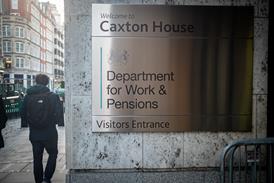A service from DG Publishing
Experts outline major challenges facing the Pensions Commission

The Pensions Commission should concentrate on improving outcomes for self-employed and low-paid workers, and closing the gender gap, industry experts have agreed.
Register now for FREE to read this article
If you are already a registered you can SIGN IN now
Register today for free!
It’s quick and easy, and as a registered user you’ll have full access to all Pension Expert articles. You will also be able to recieve editorial emails.
- Full access to all news, analysis and expert comment
- The latest industry insights delivered to your inbox on a Tuesday and Thursday morning
- The Friday Takeaway newsletter reviewing the major events of the week
- Bookmark your favourite articles for easy review
- Hear about and register to attend Pensions Expert and DG Publishing events






